Loretta (left) and Elizabeth (right) in Seattle
The Second Hopperx1 Seattle Conference was an impressive two-day event with 92 speakers, including us! We attended talks and events surrounded by a diverse group of 1500 women for two days. Here are some of our big takeaways.
Diversity and Inclusion is a Choice
The conference opened with Brenda Darden Wilkerson reviewing the history of women in technology. She asked why Katherine Johnson, and Hedy Lamarraren’t mentioned more often when talking about who made modern technology possible. Recognizing women’s contributions to technology helps counter harmful narratives that technology isn’t the place for women. This also gives younger technologists access to a larger set of role models.
Sandy Carter continued the D&I focus with a keynote speech on how to build the most innovative products—diverse teams do a much better job! Representing more viewpoints in your development team introduces more perspectives and allows you to craft products for a broader demographic. Elizabeth Viera echoed this point in her speech the next day. She declared that diversity was one of her team’s greatest strengths when building products. Having different backgrounds made for some difficult conversations when people disagreed, but defending a position urged team members to question their assumptions. In the end, their decisions were more thought through.
In a panel on diversity and inclusion, Ambika Singh, The CEO of Armoire, shared how her first angel investor was a woman who was using her company’s service. She encouraged the audience to rethink their ideas of who could be an investor, since investment firms control which ideas get funded. Increasing the diversity of venture capital firms can also increase the diversity of funded startups.
We Need to Pay Attention to the Human Side of Tech
On the first day, Jen Davies and Elizabeth Reifer walked us through wireframing techniques using decision diagrams. Our group undertook the task of designing a flow to allow a user to change their email address. Many questions arose: could this present a security issue? Should we do it like other apps we’ve seen, or should we try something new? Should the user be able to find the feature from several locations, or would that add redundant layers of complexity?
Later, we learned about developer user experience at Shraya Ramani‘s talk on how Buzzfeed open-sourced their single-sign-on authentication proxy. While this seemed like giving away the keys to the product, Shraya compared it to crowdsourcing a way to build a better lock.
Samantha Reynolds gave a talk deconstructing the hype around blockchain. She emphasized trust as the main benefit of blockchain and gave examples of uses for the technology in industries where trust is integral: agricultural, legal, and pharmaceutical sectors.
The conference wrapped up with an inspiring talk from Fred Hutchinson Cancer Research Center about how they’re partnering with major tech companies to pioneer cancer research methods. Kathy Alexion introduced how natural language processing, data science, and wearable technologies are fast-tracking research, helping doctors select treatment plans, and preventing financially-burdensome emergency room trips.
The Spotlight on Sponsors, Mentors, and Leaders
One of the most popular tracks at the conference was the set of career advice talks. Stephanie Szeto’s “The Art of an Effective 1:1” had multiple overflow rooms where the talk was being streamed. Loretta filled an auditorium with her talk on leveling up your career. Many career talks highlighted the importance of having mentors and sponsors. Stephanie Szeto spoke about how to have awkward conversations with your manager. She advised that the best time to surface a desire for a promotion is the quarter before it happens. Loretta Stokes recommended having at least two mentors. One mentor should look like you and can help you navigate challenges that they once faced. Another mentor from a different demographic can give you a different perspective on how you can react to adversity.
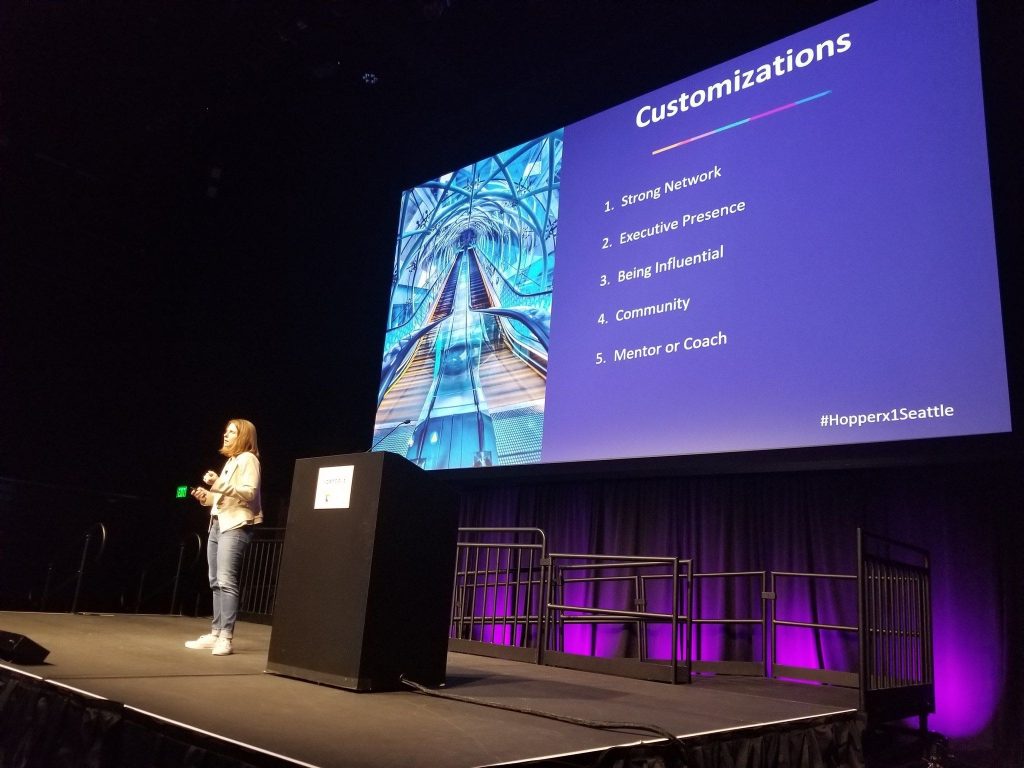
There was also a significant emphasis on sponsorship—how to get it and why we need it. A sponsor is a person senior to you that advocates on your behalf. The panel members of “The Future of Seattle Tech—A Diversity Perspective,” Alice Steinglass, Ambika Singh, and Nicole Buchanan surfaced the idea of turning a mentor into a sponsor. Especially if you can find mentors at your company a few levels above you. In Loretta Stokes’s talk, she explained that sponsors are essential to your career after a certain point: sponsors can find internal opportunities that might not be posted in public spaces and put your name up for consideration when you aren’t in the room to advocate for yourself.
Your Environment Matters, A Lot
Many of the talks acknowledged that some aspects of your career are not directly in your control, such as how you interact with your manager and team and the culture of your company. Some talks addressed ways organizations could shape their culture to be better for employees: Elizabeth Viera’s talk on Intrapreneurship programs discussed how lean, iterative, autonomous mini-startups at mid-sized companies allow employees to concentrate effort on the challenges that matter, like interesting technical problems or building a better product rather than securing support or getting customers to notice you.
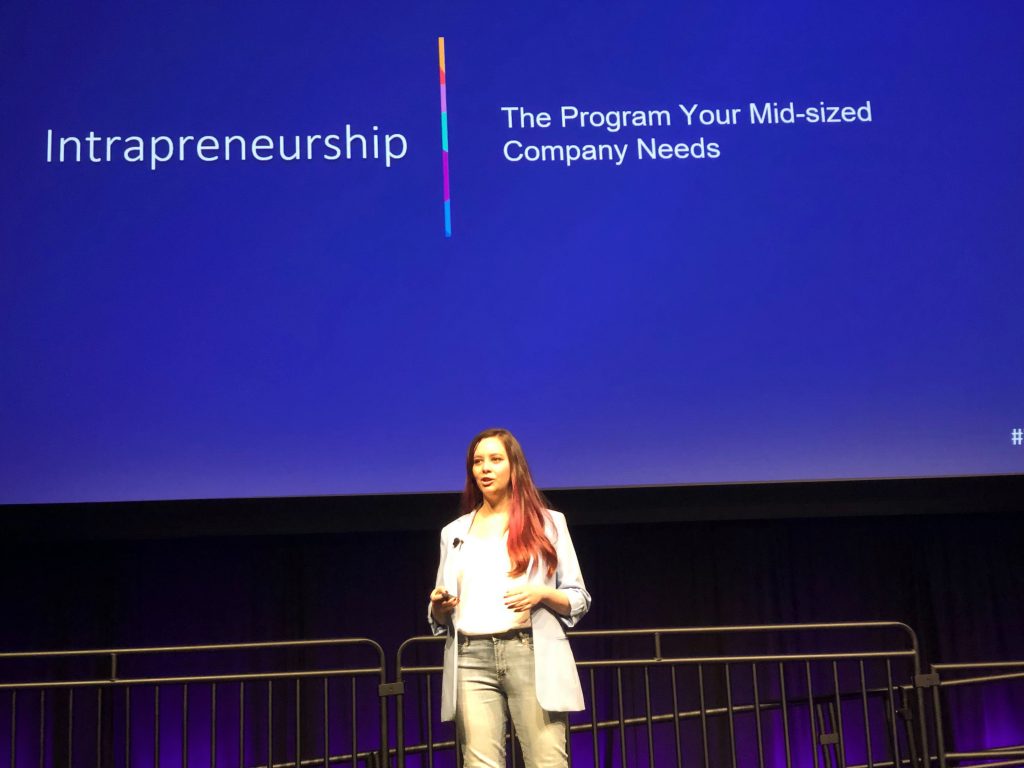
Sarah Henrikson surfaced the benefits of permitting employees to do tech part-time, which allows employees to take care of their mental health while remaining productive and engaged. Other industries have part-time employees, and the flexibility of part-time work can address the needs of employees while allowing companies to retain employees that might search for flexible options at other companies or in other industries.
On a personal level, Stephanie Szeto and Loretta Stokes both talked about how to know when it’s time to leave a team or company. Stephanie Szeto acknowledged you might just be incompatible with your manager, while Loretta Stokes emphasized the importance of being at a growing company to find those opportunities to move up. Carey Jenkins explained in her talk “Embracing the Rebuilding Years” why setting boundaries with your company is important, as a form of advocating for yourself and remind others to value your time.
We’re Still Learning
Several times at the conference, speakers advocated for life-long learning. They encouraged adopting new technologies and seeking the perspectives of users. We have many opportunities to grow into more thoughtful people and change our views of practices and institutions. Sarah Henrikson taught us that we should value part-time employees’ career ambitions and dedication at the same level as full-time employees. Many of the reasons people want to move to full-time are circumstantial, caring for themselves or other people. Even if a person wants to move to part-time to pursue their interests, they’re still learning and growing at their jobs and should be considered for raises and promotions accordingly.
Christina Lee shared apprenticeships as a pathway to the tech industry and encouraged us to see value in non-traditional tech backgrounds. There were many instances when we were urged to rethink the way we use language to be more inclusive. When one of the speakers, Erin Grace, pointed out the harm of using the language of “tribes” to describe friendship, other speakers were willing to listen and revise their talks accordingly. It was very encouraging that Hopperx1 created a climate of empathy and growth.
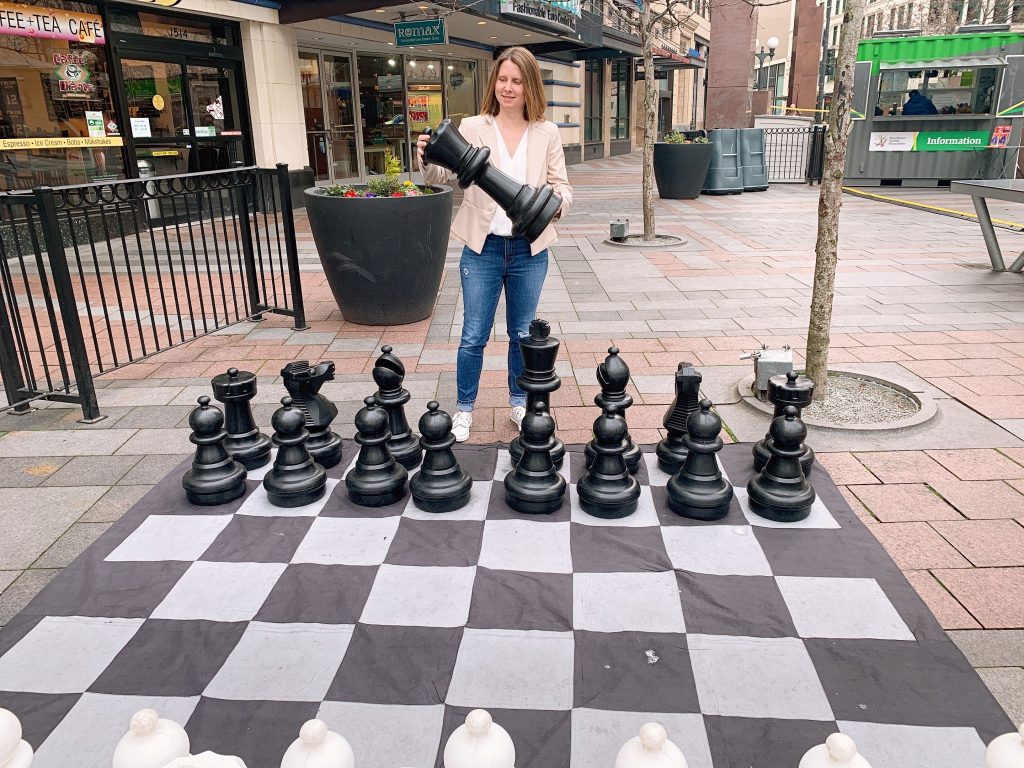
Our Takeaways
We left Hopperx1 Seattle feeling inspired and empowered. The lineup was powerful and cohesive, but never repetitive. The environment was very encouraging, and it was refreshing to see auditoriums filled with women in tech. The speakers were all fantastic and their messages resonated. We hope to go back next year! Will we see you there?
Photo of Loretta by @shidoshi. Others by Loretta and Elizabeth.
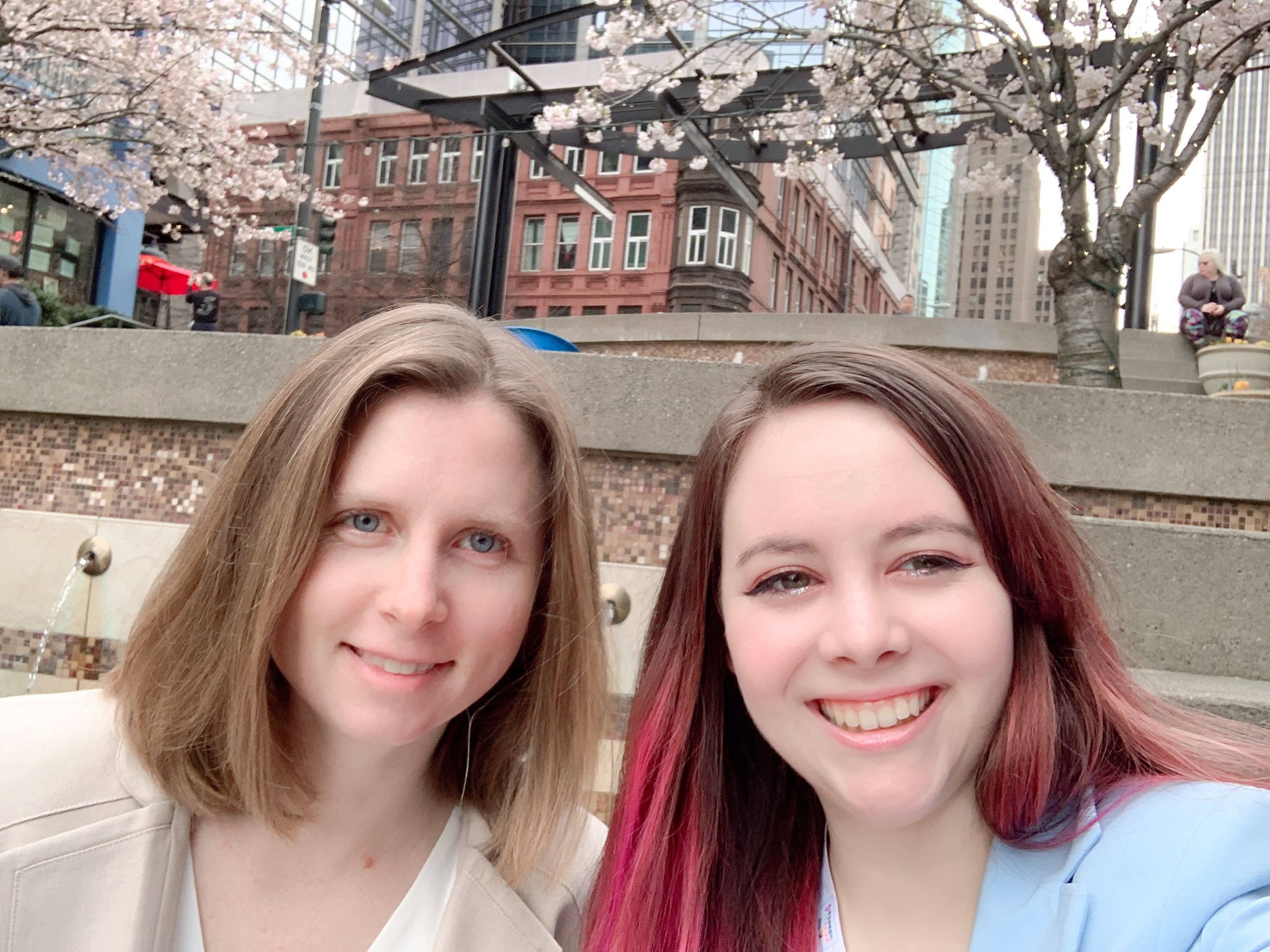



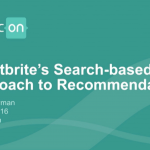
Thanks for sharing this article.